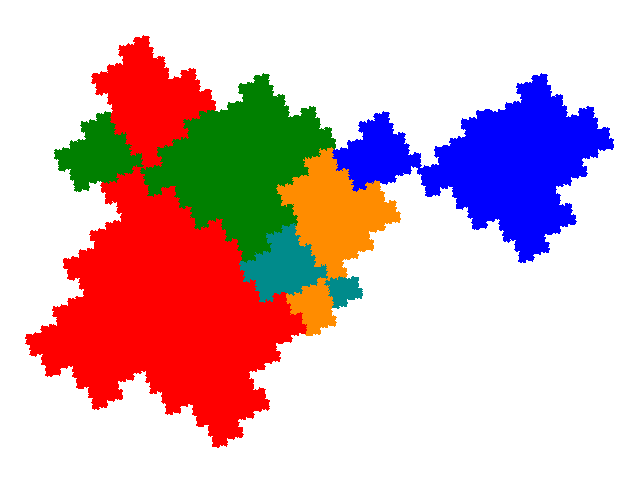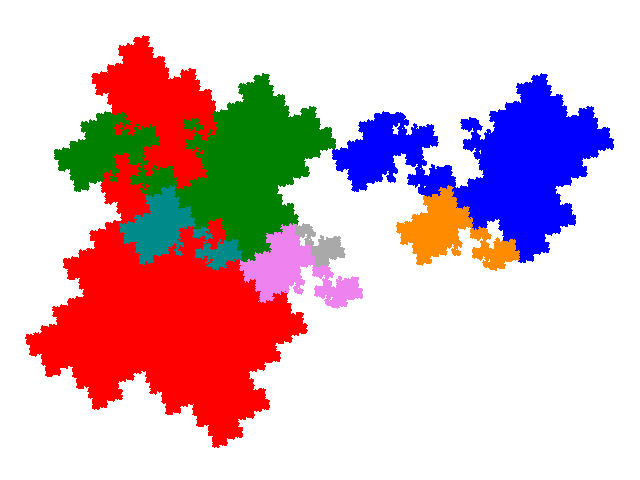
It turns out that all of these 23 tiles are fractional symmetric tiles, where 4 copies, made up of two copies each of two different sizes make up a symmetric tile. The cell transforms are
p→pp→-pp→ap - 1p→-(ap - 1)
The unit cells are shown on the pages for the various groups of tiles.
While all of these are generated by application of the co-cell technique to the assymmetric order partial postcomposition derivatives of the symmetric tile, the 11 tiles (and 1 disconnected figure) making up the first and third groups above are also obtained by partial postallocomposition of the degenerate attractors of the symmetric tile.

- fractional symmetric tiles
- compact and similar tiles
- "flock of birds" tiles
- complex teragons (1st group)
- complex teragons (2nd group)
- complex teragons (3rd group)
- complex teragons (4th group)
It turns out that all of these 82 tiles are fractional symmetric tiles, where 6 copies, made up of two copies each of three different sizes make up a symmetric tile. The cell transforms are
p→pp→-pp→ap - 1p→-(ap - 1)p→ap3p→-ap3
The unit cells are shown on the pages for the various groups of tiles.